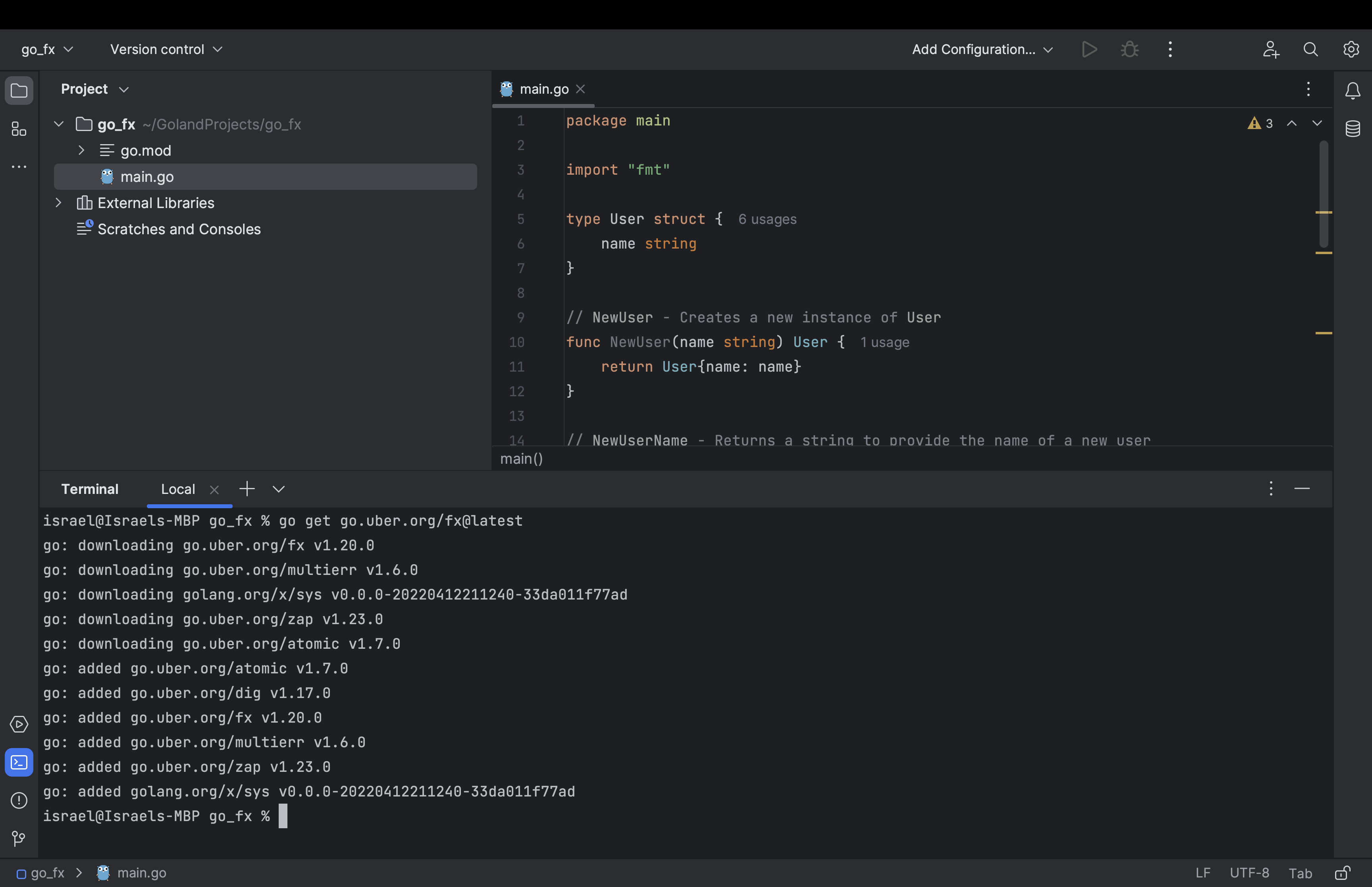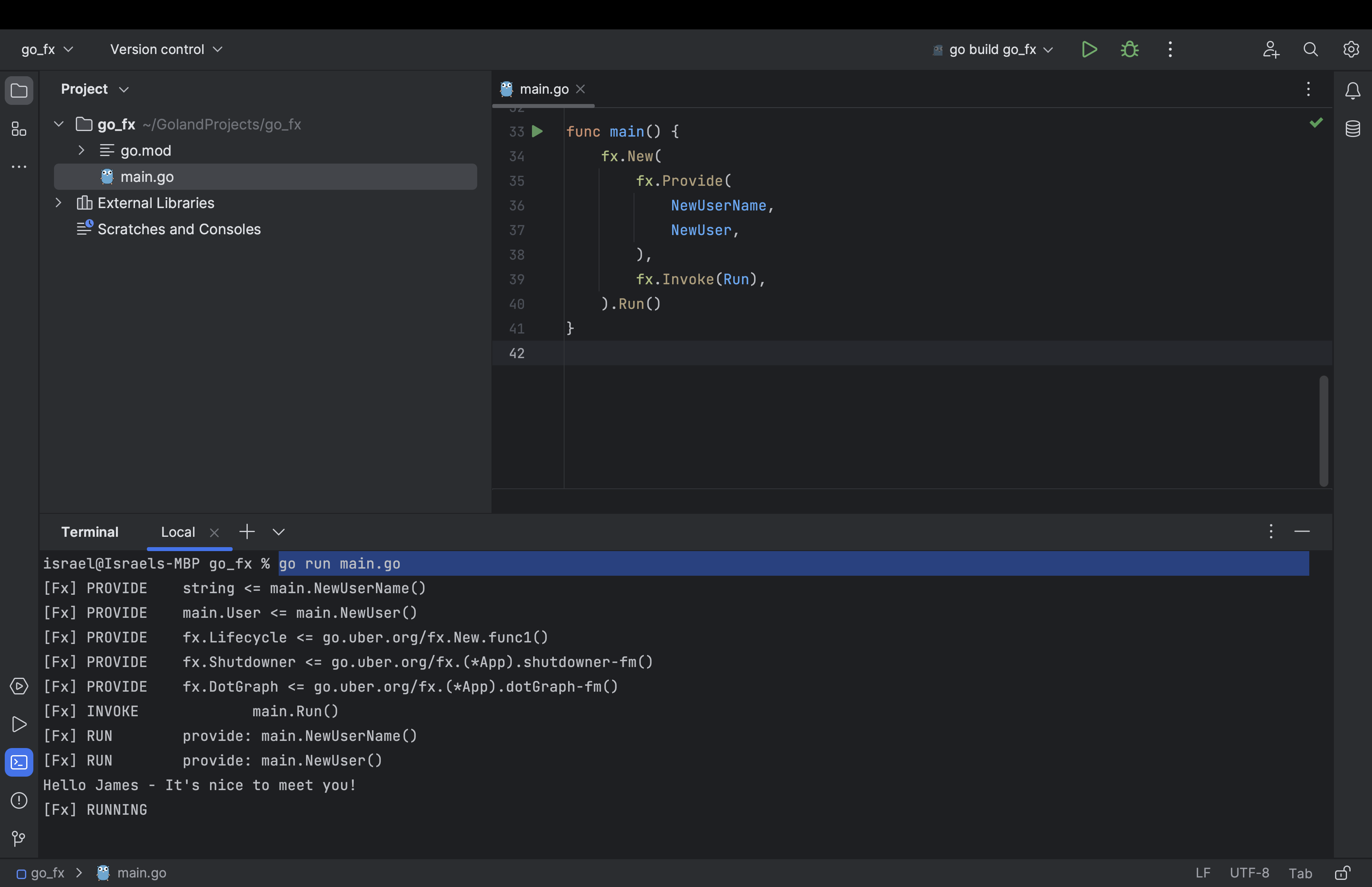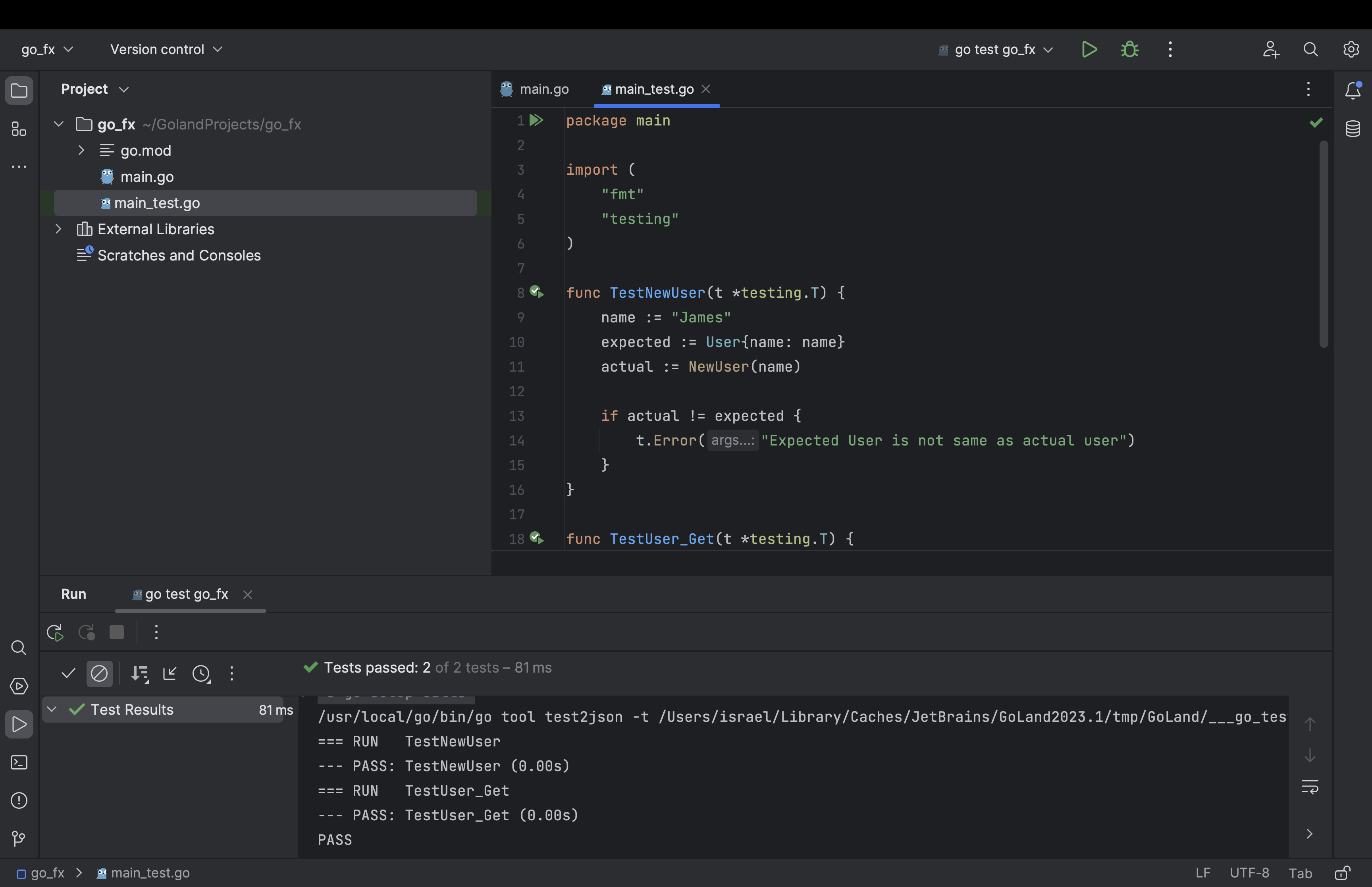Go with FX
Building Go Applications with Fx.
Getting Started with Dependency Injection in Go with Fx
You'll next learn how to use the Fx framework to manage dependencies effectively and enhance modularity within your Go projects.
Creating a Go Application
Launch your GoLand IDE and initiate the creation of a new Go project. Specify your preferred project name and choose the desired location on your local device for the project's directory.
Proceed to create a main.go file where you can write and organize your code.
Creating Components
As you did with the other frameworks, proceed to create the individual components needed as well as their dependent components, as shown in the following code:
package main
import "fmt"
type User struct {
name string
}
// NewUser - Creates a new instance of User
func NewUser(name string) User {
return User{name: name}
}
// NewUserName - Returns a string to provide the name of a new user
func NewUserName() string {
return "James"
}
// Get - A method with user as dependency
func (u *User) Get(message string) string {
return fmt.Sprintf("Hello %s - %s", u.name, message)
}
// Run - Depends on user and calls the Get method on User
func Run(user User) {
result := user.Get("It's nice to meet you!")
fmt.Println(result)
}
func main() {
}
Injecting Dependencies with Fx
You now need to install the Fx package and implement dependency injection.
To install the Fx package, launch the GoLand terminal and execute the following command:
go get go.uber.org/fx@latest
Upon execution, you can expect an output similar to the following screenshot:

Next, in the main() function, provide the dependencies to Fx and invoke the Run function:
func main() {
fx.New(
fx.Provide(
NewUserName,
NewUser,
),
fx.Invoke(Run),
).Run()
}
Your main.go file should look something like this:

Executing the code with the built-in GoLand run feature should produce this result:

Alternatively, you can execute the go run main.go command from the GoLand terminal. You should get the following result:

Testing
Create a main_test.go file as in the previous framework implementations in this series and populate the test cases:
package main
import (
"fmt"
"testing"
)
func TestNewUser(t *testing.T) {
name := "James"
expected := User{name: name}
actual := NewUser(name)
if actual != expected {
t.Error("Expected User is not same as actual user")
}
}
func TestUser_Get(t *testing.T) {
name := "James"
user := NewUser(name)
message := "You look great"
expected := fmt.Sprintf("Hello %s - %s", user.name, message)
actual := user.Get(message)
if actual != expected {
t.Error("Expected User is not same as actual user")
}
}
Finally, run the go test command or execute the test using the GoLand built-in run feature. The tests should be successful:

